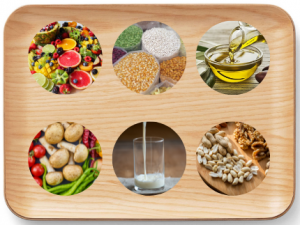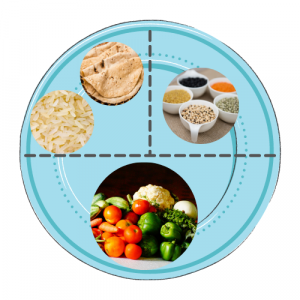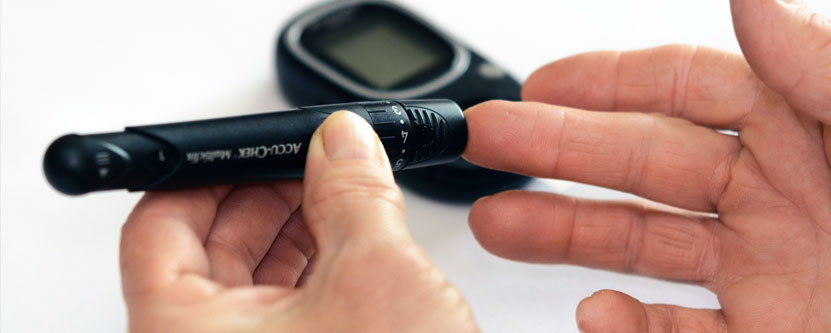As the overweight population is growing, the incidence of Type 2 DIABETES are soaring high.
People get Diabetes when their body either fails to make sufficient insulin hormone, or cannot make proper use of it. Due to this , the glucose is not converted into energy in the cells which then lead to uncontrolled blood sugar levels in the blood.
Few casual symptoms of Diabetes, include feeling thirsty or dryness of throat, urge to urinating frequently, feeling hungry occasionally, experiencing fatigue, headaches, sudden weight loss or blurred vision.
To break the progressive cycle of Type 2 diabetes , the most effective way is to follow a strict Diet Regime and take ample care of your body with Physical Activity.
How can Eating well and being Physically active help you?
According to National Institute of Diabetes and Digestive and Kidney Diseases (NIDDK):
- Will keep your blood glucose level, blood pressure, and cholesterol in target ranges
- Help you lose weight or maintain healthy weight
- Will prevent / delay Diabetes related comorbidities like kidney disease , heart stroke, Diabetic neuropathy etc.
- Reverse Diabetes
- Make you feel good and have more energy
Knowing these benefits you will certainly work towards becoming more active and making eating/ drinking changes. But question arises- WHAT, WHEN and HOW ?
1. What to eat and what to avoid?
The best way to prevent/ manage type 2 Diabetes is to eat
- A low-fat diet ie., decrease fat consumption to less than 30% of calories and saturated fat (butter, ghee, cheese, palm oil) consumption to less than 10% of calories. This will decrease the level of bad cholesterol ,thereby reducing the chances of arterial blockage.
- Add high-fibre foods to diet regimen .These foods have longer than usual digestion and absorption period and so they do not spike the blood sugar levels.
Include
- Vegetables – carrots, leafy greens, peppers, broccoli, tomatoes, potatoes, corn, and green peas
- Fruits – bananas, oranges, apples, melon, berries, and grapes
- Grains (whole grains) – wheat, rice, oats, cornmeal, barley, and quinoa
- Protein – nuts and peanuts, dried beans, chickpeas and split peas, meat substitutes, such as tofu, fish, eggs
- Dairy – nonfat or low-fat milk, yogurt
- Healthy fats – canola and olive oil, nuts and seeds
Avoid/ Red flags
- Fried foods and foods high in saturated and trans fats
- High salt foods (sodium)
- Sweets, bakery , candy, and ice cream
- Beverages with added sugars such as soft drinks , canned juice, and regular sports or energy drinks
2. When to eat?
It is always good for the diabetic people to eat at about the same time each day so that to steady glucose level is maintained.
3. How much to eat?
Plate Method can help you to control your portion size in accordance with each food group as suggested by NIDDK.
Use a 9-inch plate. Put non-starchy vegetables on 1/2 of the plate; protein on1/4 of the plate; and a grain on the last 1/4. You also may eat a small bowl / a piece of fresh fruit and drink a small glass of toned milk.
4. What Physical Activities to do?
You can derive most health benefits by Doing different types of physical activity each week
If you had been inactive from a long period or want to try a new activity, start slowly, with 5 to 10 minutes a day. Then keep adding a little more time each week.
Aerobics
Aerobic help you heart beat faster and makes you breathe harder. A 30 minutes aerobics exercise every day will be helpful .You can break up these minutes into a couple of times throughout the day. You may choose any of the listed aerobics exercises
- Walking briskly or hiking
- Climbing stairs
- Swimming or a water-aerobics class
- Dancing
- Riding a bicycle or a stationary bicycle
- Playing basketball, tennis, or other sports
Muscle building- Strength training
Strength training helps building your muscle and keep your bones healthy. Having more muscles and less body fat, will help you burn more calories as well as keep off extra weight.
Strength training can be done with hand weights, elastic bands, or weight machines.
Stretching exercise
Stretching is light or moderate physical activity that you increases your flexibility and lowers your stress. Yoga is a helpful stretching exercise that focuses on your breathing and helps you relax.
Source

